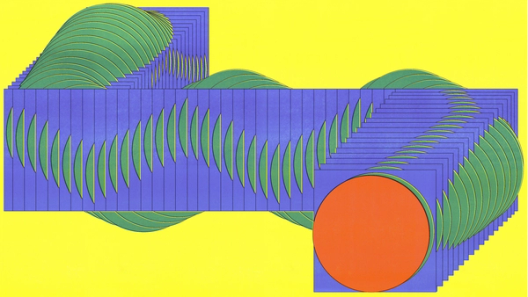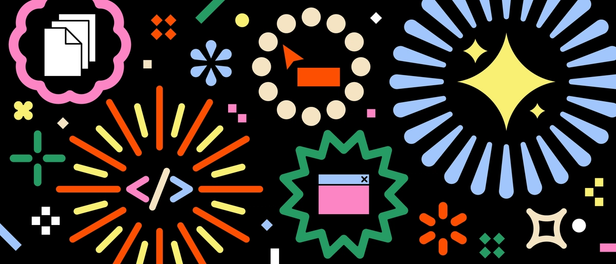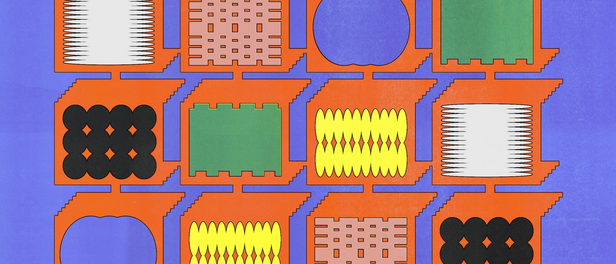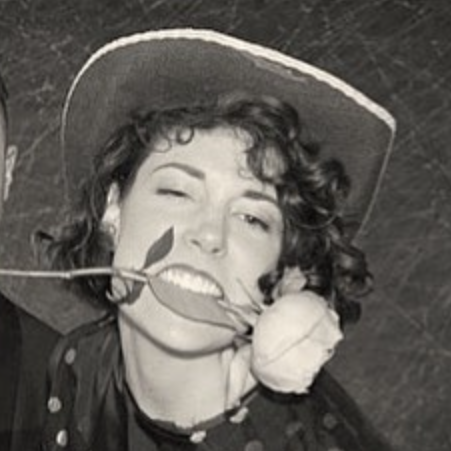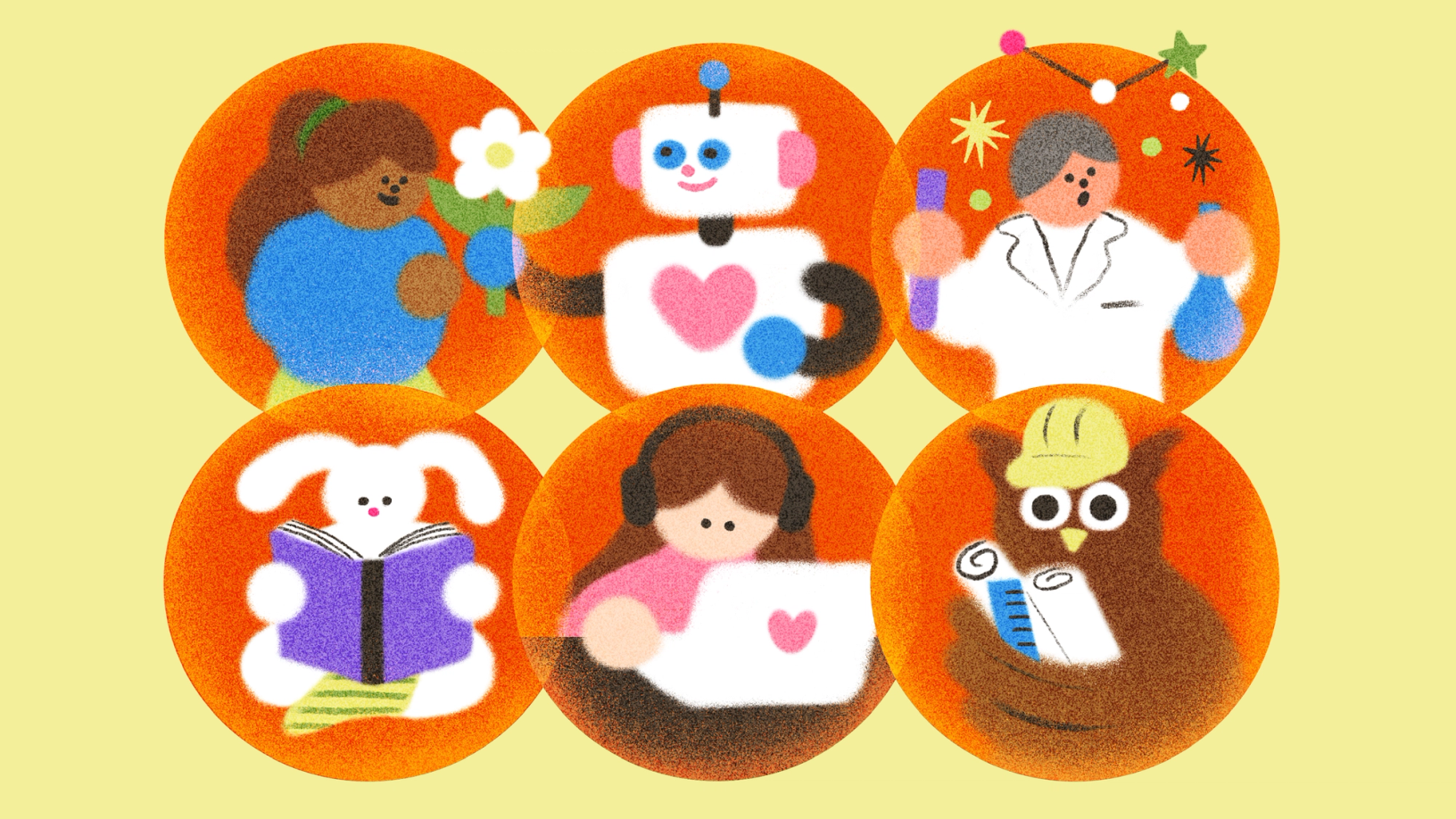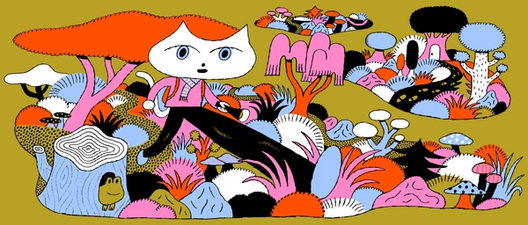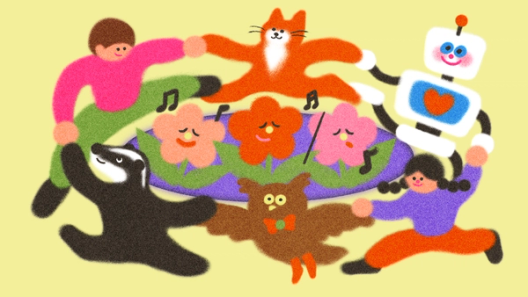As AI handles specialized tasks with increasing sophistication, the ability to connect dots across domains has never been more valuable.
Hero illustration by Zoey Kim
For a decade, I worked at the edges of disciplines—not quite a writer, not quite a designer, not quite a strategist. In startup land, this wasn’t unusual. These teams needed people who could context-switch between growth experiments and UX copywriting, or jump from onboarding new users to brainstorming a marketing campaign. As a writer with a background in design, I was able to spot the subtle differences that set products apart, whether through carefully crafted copy or thoughtful interface details. But explaining this to friends at larger companies often meant watching their eyes glaze over as I fumbled through descriptions of my work. “I do a bit of everything” doesn’t exactly inspire confidence in traditional corporate environments.
These days, that’s changing. While early-stage companies have always relied on generalists who can wear multiple hats out of necessity, I’m seeing this shift reach beyond the startup world. In conversations with peers, there’s a growing recognition that complex problems rarely fit neatly into single disciplines. Even the largest tech companies now seek out people who can bridge traditional role boundaries. The “full-stack” marketer who understands both brand and performance, the product manager fluent in design systems, the sales person who has familiarity selling to all company sizes—these hybrid roles are becoming increasingly valuable.
This trend has sparked both excitement and anxiety. For many, the appeal is clear: broader exposure means more opportunities to grow and pivot throughout a decades-long career. Working across disciplines can lead to unexpected insights and creative breakthroughs. It offers a form of career insurance, too—the ability to adapt as roles and technologies evolve. But for specialists who’ve invested years mastering a specific domain, the push toward generalization can feel like a devaluation of their expertise. After all, if everyone needs to be a generalist, what happens to the deep knowledge that only comes from sustained focus in one area?
There will always be a need for deep expertise. There will also be a need for us to match that expertise with complementary skills. It’s not about abandoning specialization entirely, but rather identifying which skills create the most valuable combinations. Take the role of the design engineer, which generated heated debate (and several tweet threads) across both design and engineering communities. Critics argue it dilutes both disciplines, while proponents like Atlassian’s David Hoang see it as essential to building better products. “Design engineers will be the most sought after role this decade,” he predicts.
In my experience, the value is manifold. A design engineer can not only take an idea to a working prototype with little lost in translation, but can spot opportunities and constraints that might otherwise be missed. The emergence of roles like “design engineer” illustrates how intentional (or unintentional) skill-building can create rare resumes for roles that might not exist yet. Few design engineers likely trod that path because they saw a lucrative career opportunity on the horizon—rather, chasing curiosity and a desire to see their ideas to fruition, they gradually skilled up in the areas missing from their stack. Those gaps in their abilities mirrored the needs in the industry at large.
Over the last decade, as product development became more collaborative, the walls between design and engineering began to blur. Many astute designers and engineers observed this shift and realized that becoming more fluent in the other discipline’s skills could make them more effective. The same is true across teams. A product designer who understands engineering constraints can propose more viable solutions. A writer who understands implementation can create more cohesive documentation. These aren’t indiscriminate dabblers—they’re multi-specialists who are developing deep knowledge in complementary fields. Their fluency acts as a bridge between disciplines.
While Vercel’s design engineer job listing was the one that made the rounds online, I also saw Linear seeking an “Operations Generalist,” Datadog a “People Generalist,” IBM various Software and 3D Generalists, and Anthropic hiring for a multi-faceted brand storyteller. A cursory Indeed search yields over 2,000 job listings for generalists.
One of the original pioneers of a hybrid career, artist and Microsoft VP John Maeda, captures this well: “In today’s world, the intersections are where exciting things happen—creativity grows in these spaces where we can see one field through the lens of another.” As AI continues to excel at specialized tasks within defined boundaries, human value increasingly comes from connecting multiple domains of expertise.
This shift toward valuing the generalist reflects a broader change in how we build software. In an allocation economy—where resources and attention are the key constraints—the differentiator isn’t specialized knowledge that AI can replicate. It’s the ability to ask questions that bridge different perspectives and reveal new possibilities. It’s about developing taste—knowing not just what’s possible, but discerning what’s worth building and why. Specialists already excel at this within their domains; years of focused experience give them an intuitive understanding of what matters and what doesn’t. The generalist’s role is to help translate and connect these deep insights across disciplines.
In an allocation economy—where resources and attention are the key constraints—the differentiator isn’t specialized knowledge that AI can replicate.
Much like crafting the perfect prompt can unlock AI’s potential, knowing which questions to ask across domains can reveal unexpected solutions. As Every Co-founder and CEO Dan Shipper puts it, “In an allocation economy, the person who wins isn’t the expert who knows the exact answer to a question. It’s the one who knows which questions to ask in the first place.”
My approach to building this kind of practice continues to evolve through trial and error. I’ve found that coffee chats with those in adjacent fields and fostering a practice of curiosity help me identify knowledge gaps. As these gaps emerge, I can choose to go deeper—whether that’s shadowing colleagues, enrolling in targeted courses, or taking on specific projects that stretch my capabilities. The goal isn’t to become an expert in everything, but to develop enough fluency to facilitate better outcomes. This fluency will become essential to building products that are not just technically sound, but thoughtfully designed and meaningfully integrated into people’s lives. So if you’re one of those feeling caught between disciplines, remember that your broad perspective isn’t a weakness—it’s a strength. It lets you see the bigger picture, the solution hidden in plain sight.
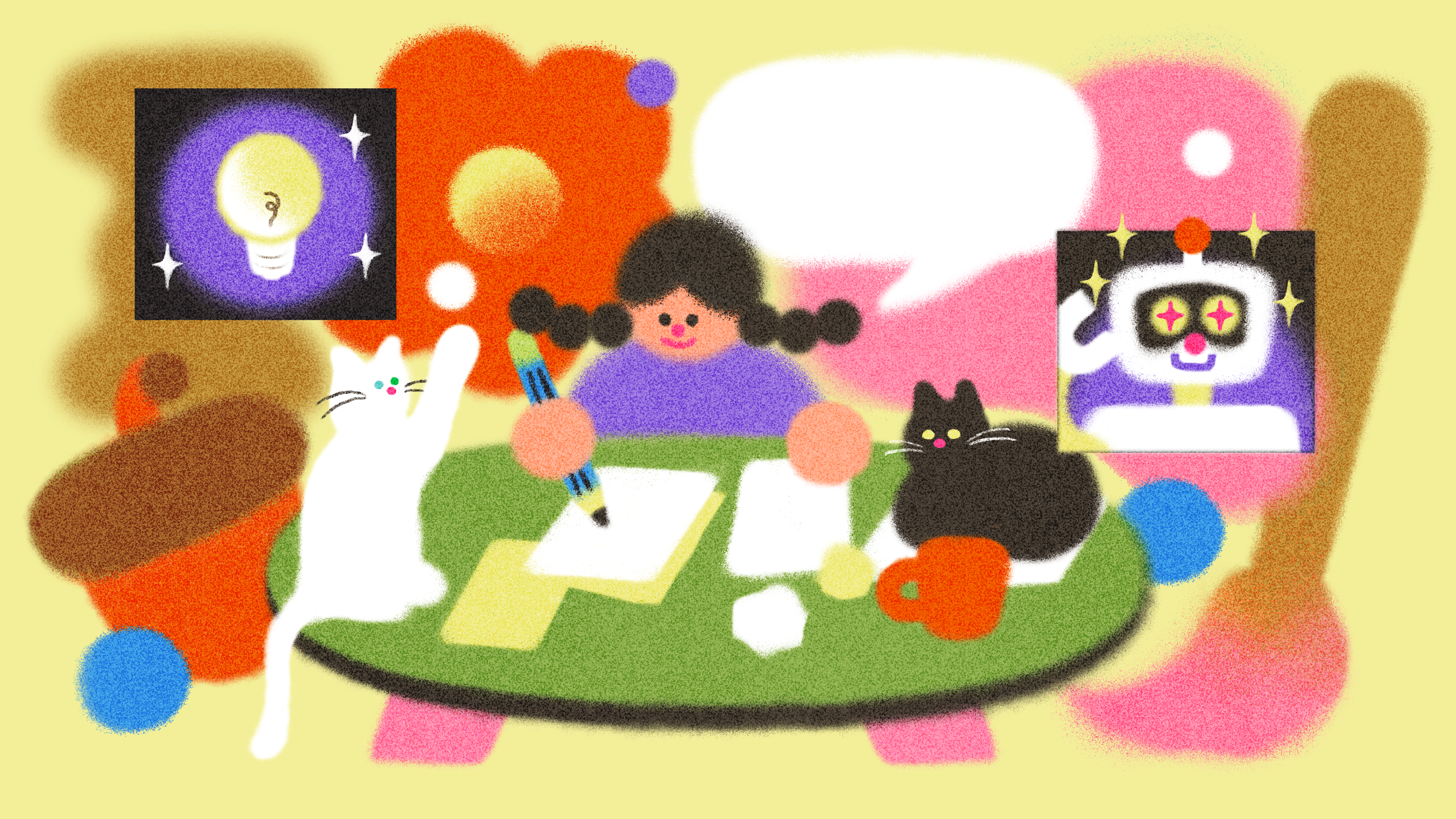
We turned six big ideas percolating around the Figma office—written from the perspective of devs, designers, analysts, writers, PMs, card-carrying generalists—and put them on record. Here’s a look at what’s on our minds for 2025.
Further reading
- “Design Engineering at Vercel: What we do and how we do it” by Vercel (2024)
- “Embracing the Hybrid Path: Reflections on Creativity, Career, and Resilience” by John Maeda (2024)
- “Building your designs” by David Hoang (2024)
- “Why Generalists Own the Future” by Dan Shipper (2024)
Related articles
